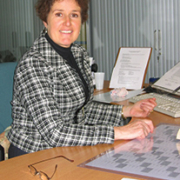How useful is screening by mammography?
Mammography was first utilized in a trial at the M.D. Anderson Cancer Center 45 years ago. After several randomized controlled trials in subsequent years demonstrated a reduction in mortality from breast cancer in screened women aged 50 to 69, mammography became the recommended approach in the US in 1976. The then European Community approved its use a decade later. Prior to this time, the majority of Western women were taught how to carry out breast self examination (BSE) and encouraged to do so on a monthly basis to allow early detection of breast cancer, a disease that one in eight women in the West will eventually develop. Mammography has remained the gold standard tool to screen for early breast cancer in symptomless older women, but its use has become increasingly controversial because of the high rate of over-diagnosis and the probably limited effect on mortality from the disease. For many women mammography is also extremely painful.
Now results from a 25 year follow-up of the Canadian National Breast Screening randomied controlled trial have been published. Approximately 90,000 women aged from 40 to 49 were allocated to either a mammography arm or a control arm; both groups were taught how to carry out BSE by a healthcare professional and were given annual physical breast examinations. The trial continued for five years, during which time 666 and 524 invasive breast cancers were diagnosed in the mammography and control arms respectively. However, during the 25 year follow-up, no difference in mortality from the disease was observed between the mammography and control arms (500 and 505 deaths respectively), demonstrating an over-diagnosis of 22% in the mammography arm. Several other studies reinforce this message. A recent report from Switzerland covering 28 years of data estimated that regular mammography prevented death from breast cancer in 0.01 to 0.02% of women, but resulted in 10% of women being recalled for further tests. Many other studies suggest that the decreasing mortality from breast cancer in recent years is the result of improvements in treatment rather than more effective diagnosis.
Authors of the Canadian study conclude that “the rationale for screening by mammography be urgently reassessed by policy makers”. Maybe the time has come to re-educate women about the benefits of BSE and how to carry out this examination, preferably with the use of one of the various clinging pads marketed for this purpose that reduce friction between breast and fingers, greatly enhancing sensitivity. And hopefully the technology of digital breast tomosynthesis will eventually replace mammography, finally offering women accurate and painless breast screening.



